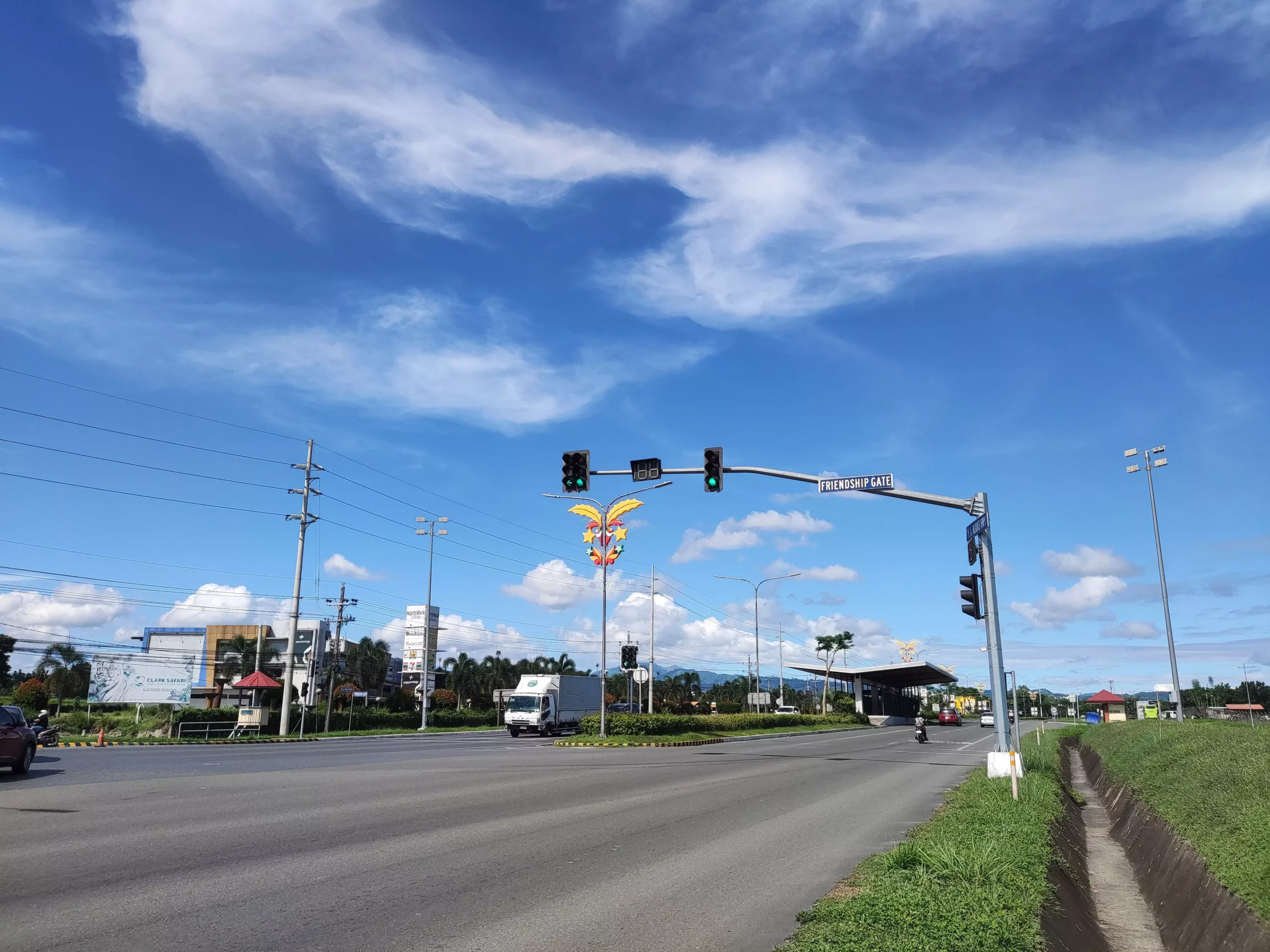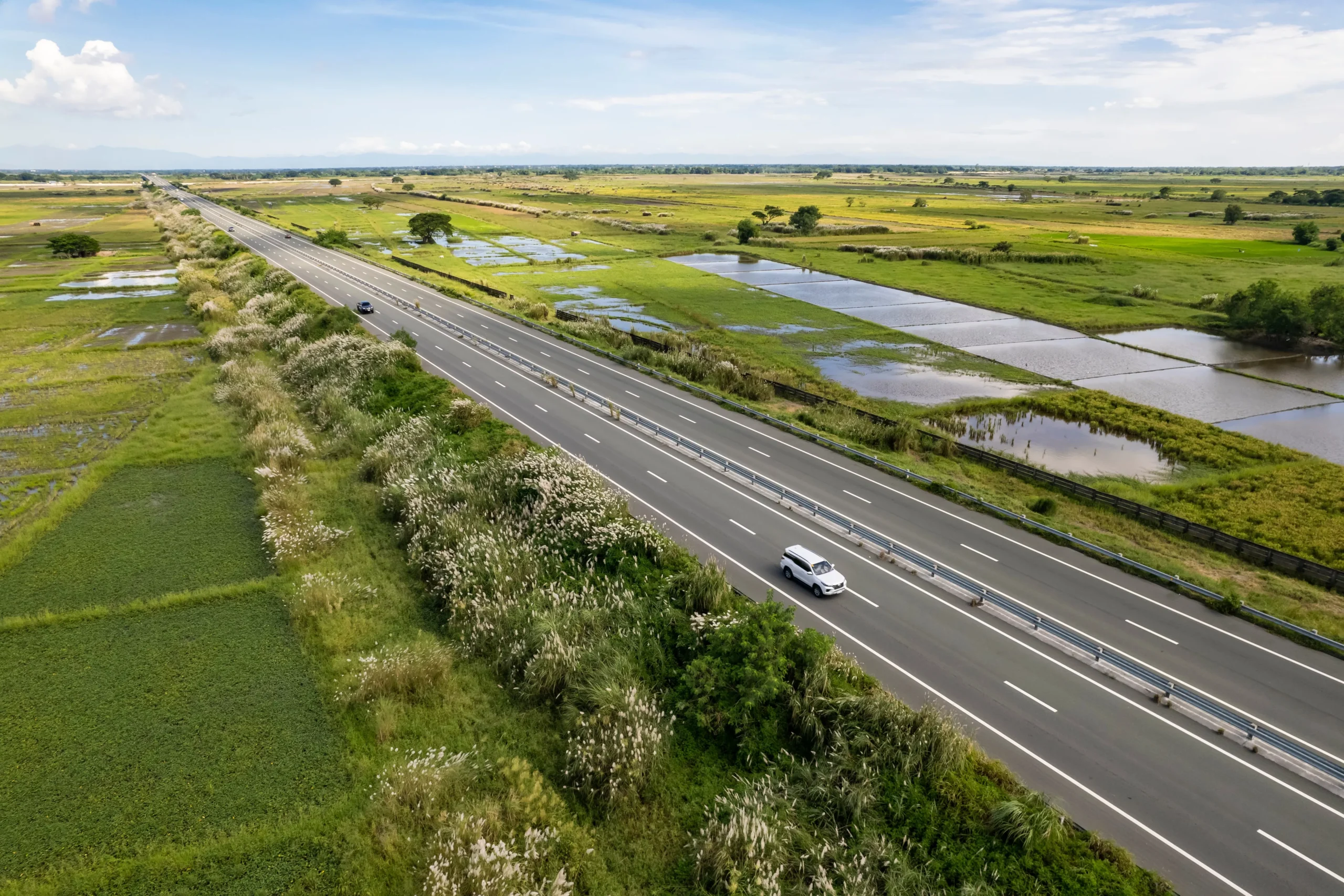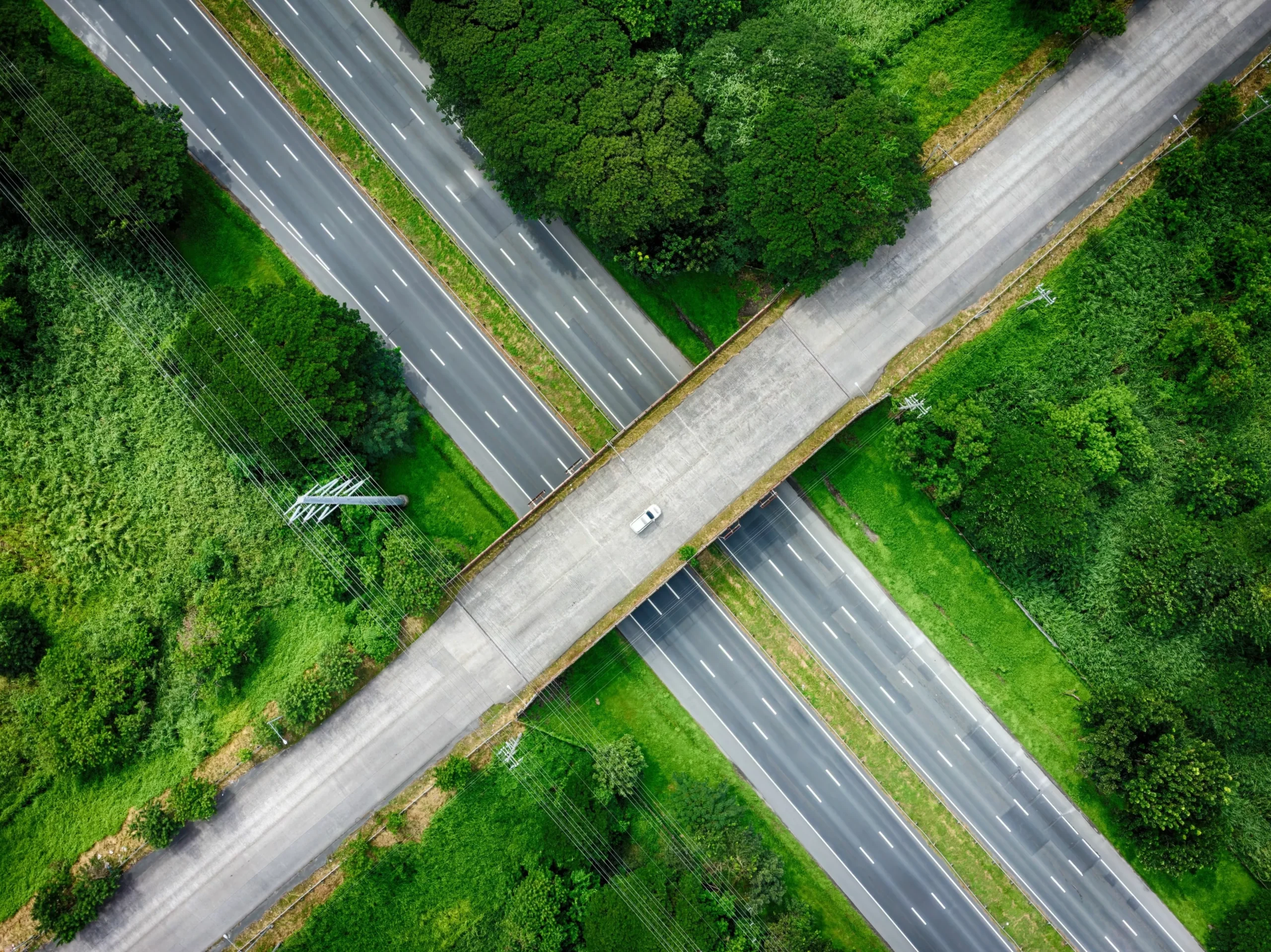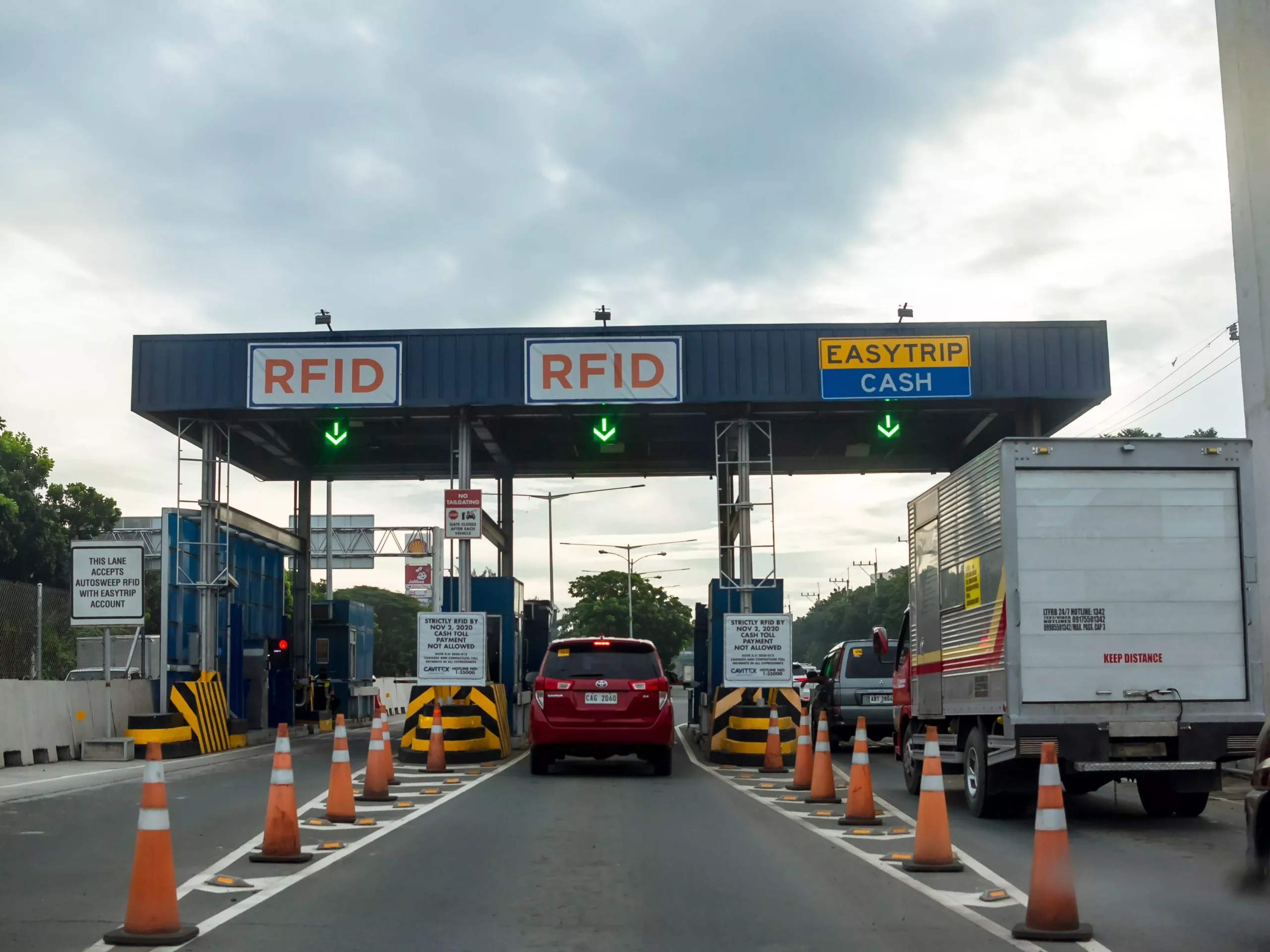Improvements in Philippine transportation are now underway. Projects like Skyway Stage 3 have cut travel times from three hours to 30 minutes between North and South Luzon, while new expressways, such as the Cavite-Laguna Expressway (CALAx) and Tarlac-Pangasinan-La Union Expressway (TPLEx) are further enhancing connectivity between regions in the country.
These expanding expressways are transforming how we travel, making mobility between major cities and regions more convenient. Whether commuting to work or planning a road trip, knowing your way around is essential for a smooth journey. Let’s cover the basics, including routes, expressway tolls, key features, and tips to help you navigate efficiently. Let’s dive in!
Table of contents
- Overview of Expressways in the Philippines
- List of Major Philippine Expressways
- 1. Tarlac-Pangasinan-La Union Expressway (TPLEx)
- 2. Subic-Clark-Tarlac Expressway (SCTEx)
- 3. North Luzon Expressway (NLEx)
- 4. NAIA Expressway (NAIAx)
- 5. Cavite Expressway (CAVITEx)
- 6. Cavite-Laguna Expressway (CALAx)
- 7. South Luzon Expressway (SLEx)
- 8. Muntinlupa-Cavite Expressway (MCx)
- 9. Metro Manila Skyway
- 10. NLEx Connector
- 11. C-5 Southlink Expressway
- 12. NLEx Harbor Link
- 13. Subic Freeport Expressway (SFEx)
- 14. Southern Tagalog Arterial Road (STAR Tollway)
- 15. Central Luzon Link Expressway (CLLEx)
- 16. Cebu-Cordova Link Expressway (CCLEx)
- Navigating the Philippines’ Expressways: Tips and Guidelines
- How the RFID System Works on Philippine Expressways
- How to Get an RFID Tag
- Smooth Rides Ahead
Overview of Expressways in the Philippines
The expressway network in the Philippines has expanded significantly over the years, making road trips faster and more convenient. With expressways like NLEx, TPLEx, and SLEx in the Philippines, you can now enjoy smoother travel to popular destinations such as Tagaytay, Pampanga, and even as far up as La Union.

If you’re curious about just how transformative this network has become, here are some fast facts that highlight its impressive growth:
- Expressways now cover over 500 kilometers across Luzon, with plans to implement another more than 350 km. (Philippine News Agency)
- Skyway Stage 3 has reduced travel time between SLEx and NLEx to just 20 minutes. (DPWH)
- RFID toll systems are now the standard, making your trips faster and more seamless. (GMA News)
List of Major Philippine Expressways
Navigating the Philippine expressway network has never been easier. This guide highlights key routes and connections to help you plan your trips accordingly.
1. Tarlac-Pangasinan-La Union Expressway (TPLEx)
The Tarlac-Pangasinan-La Union Expressway (TPLEx) connects Tarlac City to Rosario, La Union, over 89.21 kilometers. Opened in 2013, it offers scenic views and multiple access points.

With extensions planned, toll fees range from PHP 21.00 to PHP 311.00, and the speed limit is 60-100 km/h, making it a convenient route for beachgoers.
2. Subic-Clark-Tarlac Expressway (SCTEx)
The Subic-Clark-Tarlac Expressway (SCTEx) spans approximately 93.77 kilometers, linking the Subic Bay Freeport Zone to Tarlac City. Its strategic role in trade connects key economic zones like Subic Seaport and Clark International Airport.

Featuring modern amenities and scenic views, SCTEx offers a seamless travel experience with advanced RFID toll systems. Toll fees range from PHP 40.00 to PHP 164.00, with a speed limit of 60 to 100 km/h.
3. North Luzon Expressway (NLEx)
The North Luzon Expressway (NLEx) is your fast track north of Metro Manila, stretching 84 km from Quezon City to Mabalacat, Pampanga. This major economic lifeline connects to the Subic-Clark-Tarlac Expressway (SCTEx) via Clark Spur Road.
Take a detour to Clark Air Base Heritage Park for some history, or cruise to the scenic Hundred Islands National Park. With various service areas for dining and shopping, NLEx makes your journey comfortable. Toll fees start at PHP 45.00, making it a practical choice for northern adventures.

4. NAIA Expressway (NAIAx)
The NAIA Expressway, a 13-kilometer highway through Pasay and Parañaque, offers a traffic-free route to Ninoy Aquino International Airport (NAIA). It connects to Entertainment City, Macapagal Boulevard, and CAVITEx.
As the Philippines’ first airport highway, NAIAx slashes travel time from SLEx to NAIA from 60 minutes to just 20! Plans include a ramp to NAIA Terminal 3 and expanded lanes to keep traffic flowing smoothly, making your airport journey even more convenient.

5. Cavite Expressway (CAVITEx)
Also known as Coastal Road, CAVITEx spans 14 kilometers, linking Metro Manila to Cavite and easing traffic on busier routes. It whisks you through vibrant cities like Pasay, Paranaque, Las Piñas, and Bacoor—great for exploring southern gems!
Apart from connecting places, CAVITEx typically carries vital utilities like water pipelines and power lines, keeping nearby cities energized and hydrated. With tolls starting at just PHP 25.00, it’s a budget-friendly ride to local attractions. Just buckle up—speed limits range from 60 to 100 km/h for cars and 80 km/h for buses!

6. Cavite-Laguna Expressway (CALAx)
CALAx will span 45 kilometers, connecting Kawit, Cavite, to Mamplasan, Biñan, and Laguna. Its eco-friendly design features scenic routes for quick access to key residential and commercial areas. It’s only partially operational and aims to support economic growth by enhancing connectivity between Cavite and Laguna. The CALAx RFID has competitive toll fees and a planned speed limit of 60 to 80 km/h to ensure a smooth travel experience for all vehicles.

7. South Luzon Expressway (SLEx)
This 50-kilometer expressway connects Makati City to Santo Tomas, Batangas, smoothly navigating through southern Metro Manila and neighboring provinces like Laguna, Cavite, and Batangas. With its convenient access to beautiful areas, it’s no wonder that many are looking for a Laguna lot for sale to enjoy the vibrant community and lifestyle this region offers.
Stop by famous attractions like the Enchanted Kingdom or the picturesque Tagaytay. With various service areas offering tasty local treats and rest spots, SLEx makes your journey as enjoyable as the destination. The RFID used in SLEx has toll fees starting at PHP 43.00, making it an easy choice for your next adventure!

8. Muntinlupa-Cavite Expressway (MCx)
Opened in 2015, the Muntinlupa-Cavite Expressway (MCx) is one of the shortest expressways in the country, spanning only a 4-kilometer route. It connects Daang Hari to SLEx and is designed to ease traffic congestion in southern Metro Manila for Cavite residents.

Toll fees start at PHP 35.00, and the speed limit is 60 to 100 km/h for cars and 80 km/h for buses and trucks, ensuring efficient travel for users.
9. Metro Manila Skyway
The Metro Manila Skyway is an elevated toll road stretching about 39.2 kilometers from Buendia, Makati, to Alabang, Muntinlupa, improving traffic flow and offering skyline views.
Stage 3 extends 18.83 kilometers, connecting Buendia to Balintawak and linking SLEx to NLEx, significantly reducing travel times. Toll fees start at PHP 40.00 and vary by section, making the Skyway a practical travel option.
10. NLEx Connector
The NLEx Connector is an 8-kilometer toll expressway extending NLEx from C3 Road in Caloocan City to PUP Sta. Mesa. It connects to Skyway Stage 3 and follows the Philippine National Railroad track.
Although construction began in 2019, it partially opened in March 2023 and consists of two sections: Caloocan to España and España to Sta. Mesa. The speed limit is 80 km/h for light vehicles and 60 km/h for trucks.
11. C-5 Southlink Expressway
The C-5 Southlink Expressway connects Manila-Cavitex to Circumferential Road (C-5) in Taguig. It currently operates between Taguig and near E. Rodriguez Avenue in Parañaque, starting at Carlos P. Garcia Avenue and crossing SLEx and NAIA.

12. NLEx Harbor Link
The NLEx Harbor Link is a 21.60-kilometer extension of NLEx that connects the Port of Manila to Quezon City, enhancing cargo movement between NLEx and Radial Road 10.
13. Subic Freeport Expressway (SFEx)
The Subic Freeport Expressway (SFEx) is a four-lane expressway linking SCTEx to the Subic Freeport Zone. Initially built in 1996, it crosses Bataan and Zambales and was formerly part of the Subic-Tipo and Northern Luzon Expressway Segment 7.

14. Southern Tagalog Arterial Road (STAR Tollway)
The STAR Tollway, also known as the Calabarzon Expressway, spans 42 kilometers and connects the intersection of Maharlika Highway and SLEx in Santo Tomas to Batangas International Port.

It continues south, leading to Batangas and Quezon while traversing Malvar, Lipa, and Ibaan. This prime location not only enhances accessibility but also opens up opportunities for those seeking a Laguna property for sale, making it an ideal investment for both homeowners and investors alike.
15. Central Luzon Link Expressway (CLLEx)
The CLLEx connects SCTEx and TPLEx to the under-construction North Luzon East Expressway. Currently toll-free and limited to Class 1 vehicles, this expressway will connect Cabanatuan City to San Jose, Nueva Ecija, running from east to west.

16. Cebu-Cordova Link Expressway (CCLEx)
The CCLEx, also known as the Third Cebu-Mactan Bridge, is an 8.9-kilometer expressway connecting South Road Properties in Cebu City to Cordova on Mactan Island. It is the first expressway in Southern Philippines and the country’s longest sea-crossing bridge, inaugurated on April 27, 2022, surpassing the San Juanico and Marcelo Fernan Bridges.
Navigating the Philippines’ Expressways: Tips and Guidelines
Ready to hit the road? Keep this guide handy for essential insights to enhance your travel experience.
- Go cashless with RFID
Skip the long queues and pay faster with an expressway RFID tag (Autosweep or Easytrip). No more digging for loose change at toll booths. Just ensure to check your balance and reload via your favorite mobile app before hitting the road. - Avoid rush hour
Don’t waste your time in traffic. Plan around peak hours (7-9 AM and 5-7 PM) and save yourself the frustration of being stuck in traffic for hours on end. Use Waze or Google Maps for real-time traffic updates, alternate routes, or a scenic detour. - Stay in your lane
Keep an eye out for RFID and cash lane signs at toll plazas. RFID lanes tend to be faster, so ensure you’re in the right one to keep things moving. - Prioritize comfort
Plan for that long road trip with snacks, water, and a travel pillow. Use expressway service stations for rest breaks or a quick stretch. Many even have Wi-Fi—perfect for checking your next playlist or mapping out your stops! - Be mindful of speed limits
It’s tempting to hit the gas, but safety first! Follow speed limits and stay aware of changing weather conditions. Not all days are sunny, so when roads are wet, drive with caution. - Prepare for emergencies
No one likes breakdowns, but it happens. Have emergency numbers for the expressway operators saved. Most highways have service areas if you need help, but it’s wise to keep your car in check before going.

How the RFID System Works on Philippine Expressways
Expressway RFID tags make travel faster by eliminating the need to pay cash at toll gates, saving time for handling payment, giving change, or dealing with long queues. With RFID, expressway tolls are automatically deducted from your pre-loaded account, so you pass through smoothly, making it a quicker and more efficient option for expressway travel.
Expressways using RFID
Expressways such as NLEx, SLEx, Skyway, Cavitex, and others utilize expressway RFID systems. Depending on the expressway, you may need an Autosweep RFID (e.g., SLEx, Skyway) or an Easytrip RFID (e.g., NLEx, CAVITEx).
Interoperability
Some expressways require specific RFID tags, but ongoing efforts aim to improve system interoperability, allowing smoother access across multiple expressways without needing different tags.

How to Get an RFID Tag
Autosweep RFID
You can quickly grab one at installation sites along SLEx, Skyway, and other partner expressways. Reloading is super simple, too—you can use online banking, mobile apps, or partner establishments to top up.
Easytrip RFID
Head to installation spots on NLEx, SCTEx, or other connected expressways to get yours. Need to reload? No problem! You can add funds through online platforms, payment centers, or mobile apps for a hassle-free experience.
Smooth Rides Ahead
Transportation in the Philippines is evolving, and with a vast network of expressways at your fingertips, your travel experience is smoother than ever. From the breathtaking views along the TPLEX to the convenience of the NAIA Expressway, these major routes transform how we get around.

With innovations like RFID systems making toll payments a breeze, planning your next adventure has never been more accessible. Meadowcrest, located just 3.2km from CALAX Laguna Technopark Interchange, offers luxury living in a prime location with easy access to major expressways, making your travels convenient and stress-free.
This blog was produced by the top digital marketing company in the Philippines, Spiralytics.
Come home to a masterfully designed community that prioritizes comfort and connectivity. Discover how a Laguna property can be your perfect base for daily commutes and weekend getaways!

Nestled in a prime location, Meadowcrest offers seamless access to CALAX, Sugar Road, and Broadfield—connecting you to key destinations across the South. Designed as a 15-minute community, it fosters a balanced lifestyle with open spaces and an inviting outdoor living experience. As part of a thoughtfully planned estate by Federal Land, Meadowcrest offers a seamless blend of living, work, and leisure—reflecting the vision behind Federal Land Communities.
Inquire now to learn more about making Meadowcrest your home!
About the Author

Martin is an experienced marketer with over 16 years of experience across various industries including real estate, banking and finance, technology, and advertising.
Martin has a broad range of expertise in having handled campaigns, brand launches, activations both in the traditional and digital space. Currently serving as the Digital Marketing Head at Federal Land, Martin leads a team focused on managing digital sales and platforms for the residential, estates and commercial business units.

